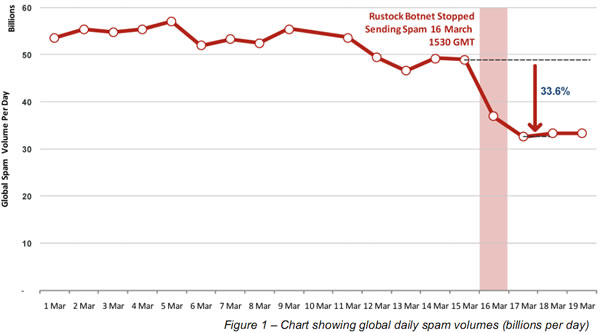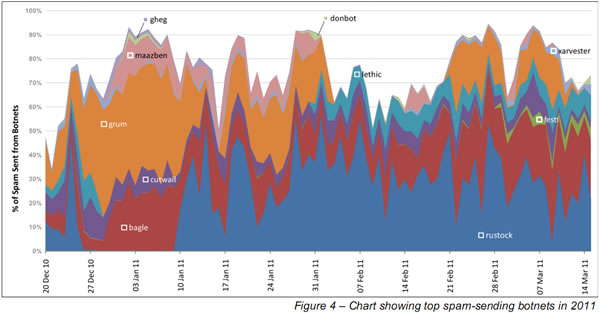Spam levels have decreased by 33.6% only two weeks after Microsoft tackled the Rustock botnet according a Symantec MessageLabs Intelligence report (PDF). It's estimated that 83.1% of all global spam was sent from botnets in March and prior to its takedown, Rustock was responsible for 28.5% of that junk mail, sending as much as 13.82 billion spam emails per day. A few months earlier in late 2010, Rustock was behind as much as 47.5% of all spam, sending roughly 44.1 billion emails daily.

Although Rustock's takedown represents a massive success for Microsoft and law enforcement agencies, Symantec notes that the operators could stage a comeback. Additionally, Rustock's absence has caused other botnets to increase their activities to capitalize on the gap in the market. "Bagle" is now the largest botnet and has ramped up its activity to some 8.31 billion spam emails a day – its highest output since October 2009 when it accounted for approximately 12.2% of global spam.

Some 12.4% of all spam came from the Russian Federation, making it the most frequent source of spam during March. This is mostly attributed to the fact that Russia is home to large botnets including Bagle, Lethic and Maazben. India has the second highest spam rate at 8.8% and Brazil follows at 5.9%. US-based operations were responsible for 4.5% of spam, ahead of the Ukraine (4.4%), Colombia (3.9%), Romania (3.8%), Argentina (2.8%), Vietnam (2.5%) and the Republic of Korea (2.5).